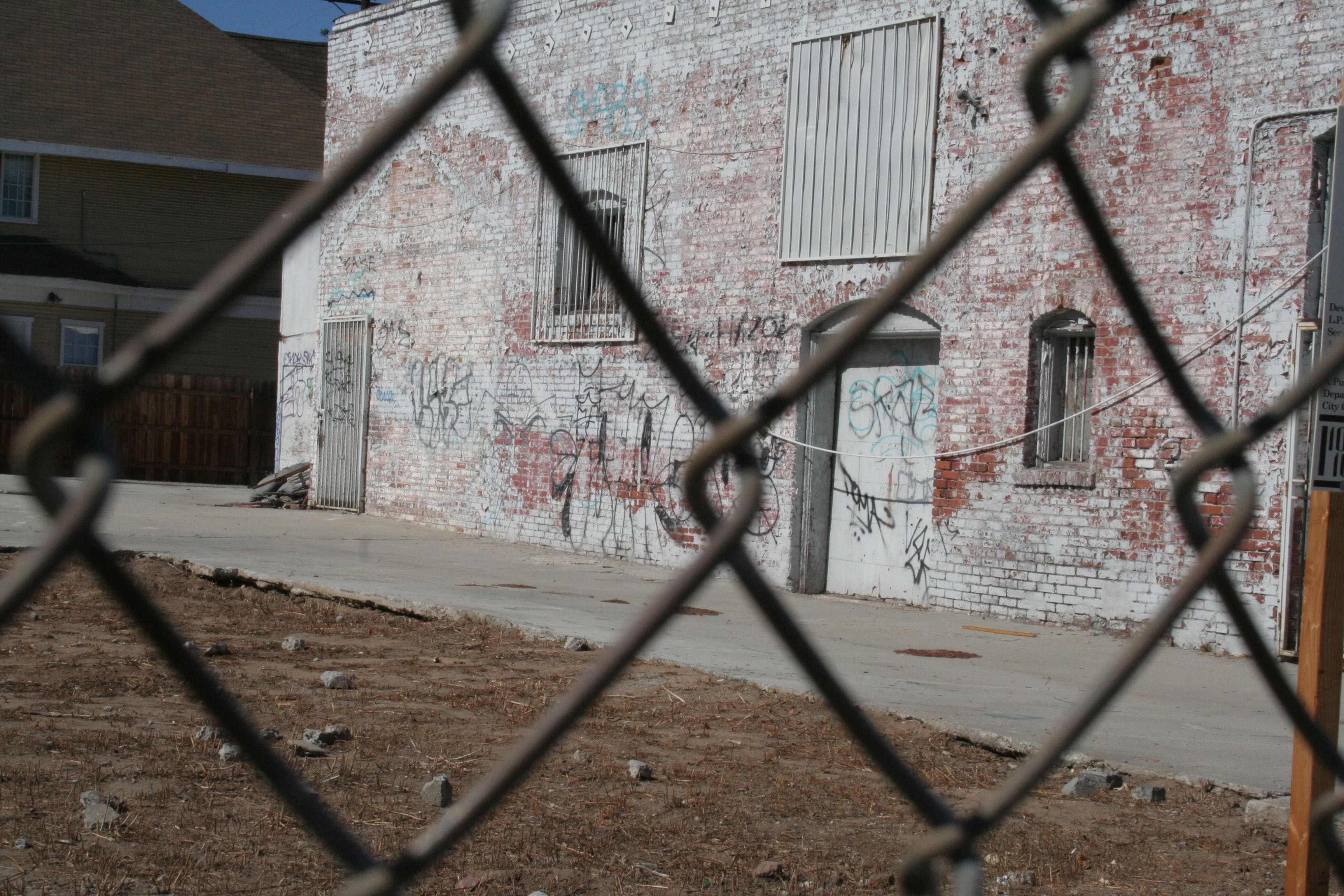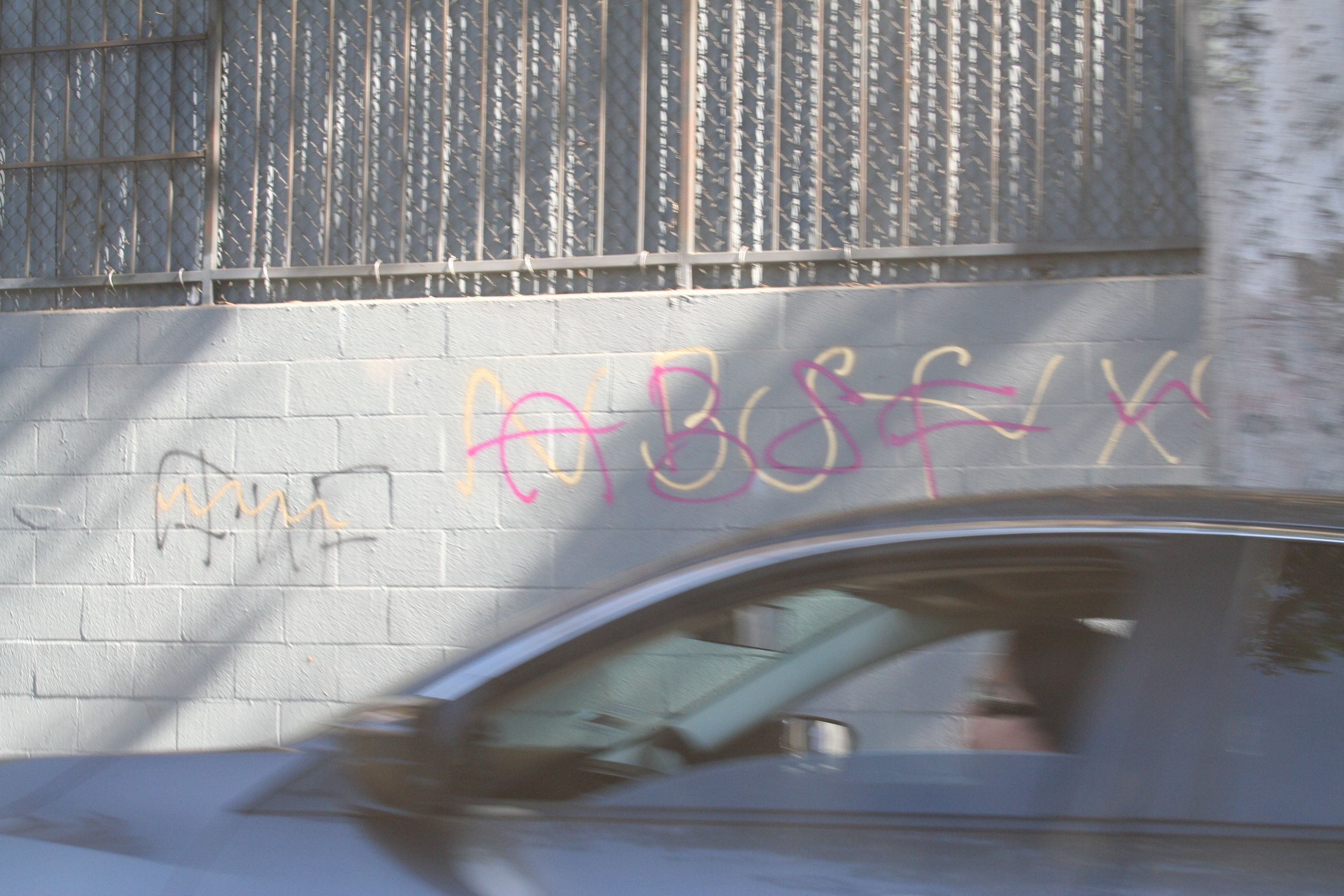


Pico-Union is not a colorful community. The small, 1.67-square mile town is a landscape of beige, uniform storefronts and chain link fences fronting empty lots with overgrown, brown weeds sprouting from torn-up chunks of cement.
But for the past six months, the Pico-Union color palette has been shifting. Graffiti markings in blacks, blues, pinks, and reds have been breaking up the battered, exposed brick and beige walls that define the city landscape. The markings are not clear or discrete. Oftentimes they cannot be read — but they tell the story of the violence, angst and tension gripping the small community.
In the midst of the gang-turf war in Pico-Union, is an art war played out on the beige walls of the community.
“You can kind of tell what the tensions are and what is going on with the gangs by reading the graffiti,” said Los Angeles Police Department Capt. Jeff Nolte of the Rampart Division. “It can be a challenge, it can be 'we want to claim this territory,' or as we have seen with the increase in tagging - they're trying to start something.”
There has not only been an uptick in graffiti, Nolte said, but also an increase in gangs tagging over each other. He says it is evidence of heightened tensions between the two main gangs in the area — Burlington Locos and 18th Street Gang. The graffiti markings are meant to mark territory and to assert dominance.
“It’s a system designed on respect,” Nolte said. “To cross out another gang’s sign or to put your name on another gang’s territory is a huge sign of disrespect and leads to violence.”
And there has been a spike in violent crime this year, along with a spike in graffiti, and the Rampart Division believes the two to be related. According to Nolte, the reach of these graffiti wars has only grown with the presence of social media.
Just this past summer two teenage brothers were gunned down on Hoover Avenue in Pico-Union after one of them had been posting photos of graffiti art they created which crossed out the names of specific gangs. Though neither boy was in a gang, just the posted images were enough to provoke violence. The boys were only 14 and 15 at the time. The 14-year-old was killed and the 15-year-old survived but with serious disabilities.
According to Nolte, gangs begin recruiting children as young as 9 or 10 to begin tagging for them, which can be a catalyst for a lifetime of criminal behavior.
“It’s too young to be involved with gangs. Kids that young, I don’t think a lot of the time they can tell the difference between a mailman, fireman or policeman,” Nolte said. “So I just don’t know if they know what they’re doing, if they know the difference at that age.”
Ricardo Guerrero, a Pico-Union native, has experienced the way graffiti grips the children in the area. He said they are fascinated by it because it is all around them, and with the schools in the area cutting arts programs there is nowhere else for children to experience art.
“There was one summer that was very hot, and all the arts programs in the schools got cut, and I told [my sister] Gloria the kids are going to go crazy,” Guerrero said. “So I said I have all these walls why don’t we let them come in and use them legally.”
This is how he started Graff Lab, a place that gives a legal space for kids and adults alike to explore graffiti art in a positive way. Tucked on the corner of Union Avenue and Venice Boulevard behind a barricade of barbed wire and chain link, there are no beige walls. The walls are covered in a kaleidoscope of graffiti art, but this time telling a different story: one of recovery and prevention alike.
Larry Chavez, 42, was at Graff Lab one warm, Sunday morning in mid-September. He worked for three hours in the 90-plus degree heat on a full length, black, white, and blue mural. His black t-shirt was drenched in sweat, and his jeans were splattered with paint.
“It says ‘RIP Santos,’” he said, indicating to the stylized characters. “It’s for my friend, he overdosed two weeks ago.”
For Chavez, graffiti art is a way for him to express himself and to cope with the difficult things in life.
“Everyone thinks we are banditos,” Chavez said. “But, we’re not. We’re good kids, we just want to do our art.”
Chavez got started with graffiti when he was 16. He said he ran with the wrong crowd and after being caught a few times for illegally tagging, his parents cracked down. He quit for 25 years, got a day job, started a family, but there was always something missing. It was the art.
“For me, all my emotions, everything I have inside, I just put it on the wall,” Chavez said.
Whether used for personal expression or as the so-called “newspaper of the gangs,” graffiti art plays a significant role in the Pico-Union community. And the art war continues to rage on.
Each day, fresh graffiti appears on the walls of Pico-Union. And each day, more paint is rolled over, restoring it to beige once again.